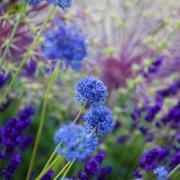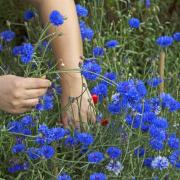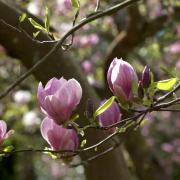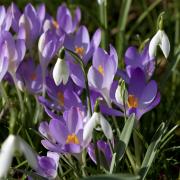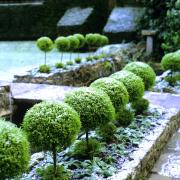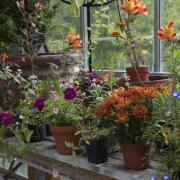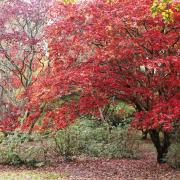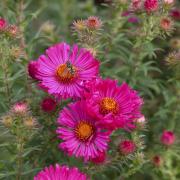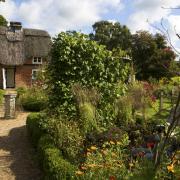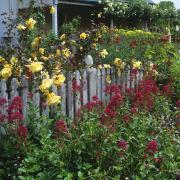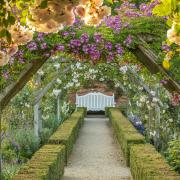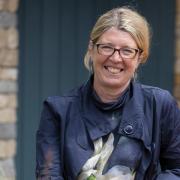Take a stroll amongst these cheerful harbingers of spring in some of Hampshire’s most exclusive locations

Daffodils will be adding their touch of golden sunshine all around the county this month and into early April. Their appearance tells us that winter is finally over and warm weather is on its way.
What’s more, these cheerful flowers come in a variety of shapes and colours, from the common yellow to whites and pinks, with singles, doubles or split-coronas. There is great diversity in daffodils – from the antique to the most recent cultivations.
Whether you want to enjoy the sheer mass display of thousands of naturalised daffodils or get ideas for growing them in containers with other bulbs, Hampshire offers a great choice of gardens to inspire.
I’ve scoured the county to find some of the best displays in the most unusual and unlikely of venues and I hope you will enjoy discovering the different varieties on offer around Hampshire.
Bere Mill, Whitchurch, RG28 7NH
For a picturesque setting it is hard to beat the historic Bere Mill beside the glistening River Test. Here, as well as naturalised fields of daffodils, you will find a canopy of blossom confetti, an unusual Japanese Tea House and if you are very lucky, a pair of gliding white swans may complete your scene. Returning visitors enjoy observing the progress owners Rupert and Elizabeth Nabarro have achieved over the past 20 years; restoring the serene contoured landscape, adding plants that thrive in this unique environment and putting a contemporary touch on their original garden with bespoke sculptural pieces.
Opening times: Sunday 9th March (1.30pm-5pm)
Admission £5, children go free
***
The Island, Greatbridge, SO51 0HP
Also on the River Test, and on an island as the name implies, this three-acre garden has a fine display of old varieties of daffodils. Sweeping lawns extend down to the edge of the river, there are spring-flowering trees and a further three-acre arboretum planted in the 1930s by Sir Harold Hillier with a collection of trees and shrubs for year-round interest. An avenue of Metasequoia and Wellingtonia is underplanted with daffodils, as are many other areas throughout the garden. Get together a group of family and friends for this one.
Opening times: By appointment April to September for groups of 15-30 max
Admission £4, children go free
***
Beechenwood Farm, Odiham, RG29 1JA
Drifts of daffodils under towering deciduous trees are interspersed with the added jewels of early tulips and shimmering hyacinths. Shadows cast patterns and the effect is quite mesmerising. Stretching over two-acres, the gardens have a relaxed vibe and the array of creatively planted containers of mixed bulbs is a wonderful idea to borrow. Michael and Sarah Heber-Percy will happily give you some tips to get a spring look in your own garden.
Opening times: Every Wednesday 26 March to 4 June (2pm-5pm) Admission £4, children go free
***
Sir Harold Hillier Gardens, Romsey, SO51 0QA
A garden for every season, spring sees drifts of daffodils amongst spring blossom and bloom. From the golden glow of bobbing heads in the winter garden to blocks amongst the magnolias and the scent of witch hazels in the air, there is much to savour in these vast 180-acre gardens.
Opening times: All year (10am-5/6pm)
Admission £9.10, children go free
www3.hants.gov.uk/hilliergardens
***
Houghton Lodge Gardens, Stockbridge, SO20 6LQ
Another peaceful riverside retreat, the gardens are Grade II listed and surround an enchanting 18th century ‘Cottage Orne’. Snowdrops are followed by drifts of daffodils interwoven with rare Scilla bythinica and ribbons of daffodils also fringe the river’s edge. One of the joys of this garden is that you can wander freely without any crowds to explore the riverside walks, peacock parterre and the old walled garden.
Opening times: 1st March to 31st Oct, Thursday to Tuesday (10am-5pm) Admission £5, children go free
--------------------------------------------------------------
Top tips for Daffodils
-Older varieties naturalize best
-Daffodils are very easy to grow. They prefer well-drained soil, sun or light shade
-Flowers will always face the sun
-August and September are the best months to plant
-Plant at a depth three times the height of the bulb in beds, borders or containers but plant deeper in lawns, around 15cm
-If your soil is heavy, mix grit into the base of the planting hole
-Don’t plant where the ground can be waterlogged
-Plant in drifts
-Deadhead flowers when they’re finished to ensure next year’s display
-Let the foliage die down for around six weeks
-Don’t tie the foliage as they need the energy to transfer to the bulb to produce next year’s flowers
-After flowering, keep watered and fed with high potash, until the leaves die back
-Remove and burn any bulbs with diseased foliage
-Divide over-crowded clumps in late summer and replant offsets
-Store lifted bulbs in a cool, dark place
-You can create your own cultivar by cross-pollinating seeds; it will take two to three years to reach flowering size
***
Did you know?
-Daffodils are divided into 13 divisions, based mainly on flower form, such as trumpet, large-cupped, double and split-corona
-There are more than 50 species and 25,000 varieties
-The name ‘daffodil’ was first recorded in 1538, earlier it was called ‘affodell’
-Other names include jonquil, narcissus and paperwhite
-Daffodils were brought to Britain by the Romans as they thought the sap had healing powers
-The bulbs and leaves are poisonous
-Daffodils symbolised chivalry in Victorian times and now hope




